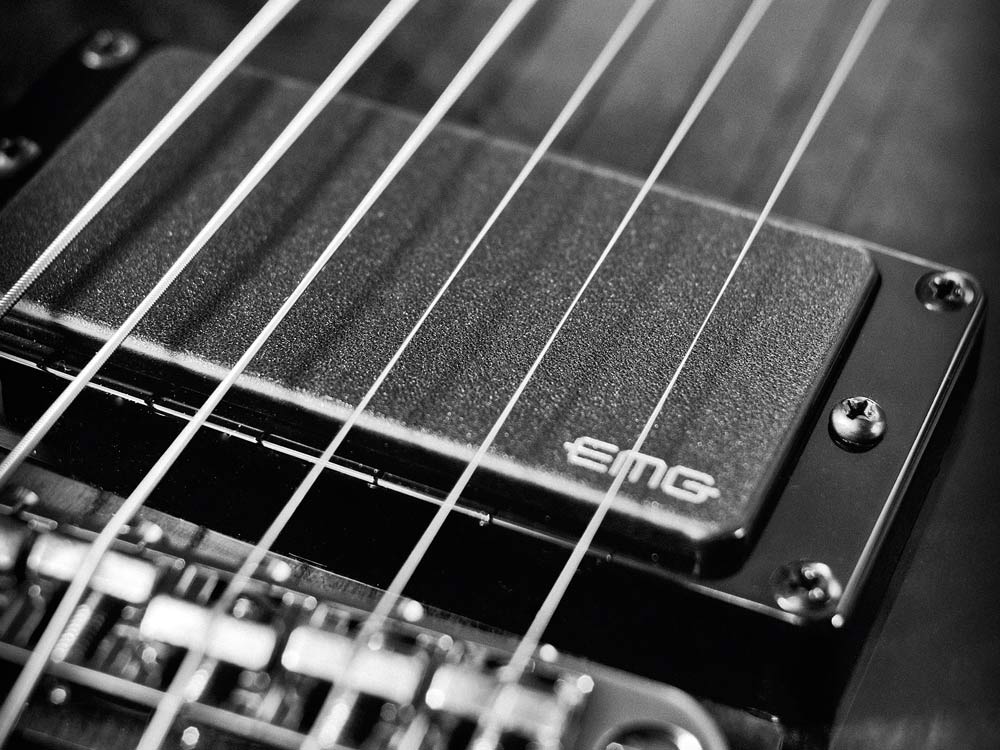
Intro/Active pickups
They are the beating heart of your electric guitar’s sound. Pickups first arrived on the scene in the 1930s, but pickup makers are still refining the art of squeezing more from magnets.
But what really makes them tick? From eddy currents to DC resistance, American Wire Gauge to magnet strength – a pickup’s voice is a symphony of interlocking influences.
Understanding how these factors shape your electric sound is essential if you’re going to get heavenly tones from your guitar. But there’s a lot of snake oil swilling around the subject that can slip up the unwary.
So that’s why we’ve created this feature to give you the true word, from A to Z, with expert insights from some of the world’s best pickup makers, such as Thomas Nilsen of Cream T, who makes custom pickups for the likes of Billy Gibbons and Keith Richards; and Kevin Beller, who is head engineer at Californian giant of pickup design Seymour Duncan. We’re also joined by Brit magnet-meisters such as Tim Mills, founder of Cornish pickup pugilists Bare Knuckle Pickups, and Jaime Campbell of boutique Manchester makers The Creamery, who argues that if you want to find the perfect pickup, you have to go beyond the term ‘tone’ to ask serious questions about the sounds you want to make music with:
“Tone is the feeling a player exhibits whilst playing: what pickups have is a sound,” he says. “Now, that sound is either bright or warm, crunchy or sweet, attacking or plummy. All these kinds of descriptions are of sound.”
It’s into that world of sound, and the pickup features that shape it, that we venture now. Note that we’re confining our discussion to magnetic pickups for electric guitars here – there’s plenty to talk about in that area alone – leaving the question of acoustic and MIDI pickups for another feature.
So plug in the soldering iron, get the amp warmed up and the strings singing, as we guide you on the way to pickup nirvana...
A is for... ACTIVE PICKUPS
Compared with the passive magnetic pickups fitted to most electric guitars, active pickups require an additional energy source (usually a nine-volt battery) to power a preamp, active filters and EQ that sculpt the pickup’s sound. Their design offers benefits such as reduced string pull, increased clarity and reduced treble loss when you roll off volume.
Rob Turner, founder of market leaders EMG, explains: “We treat the two coils separately. They’re not in series or parallel; they actually get summed together electronically. You get the benefits and stability of having a preamp, but it’s still a magnetic pickup. We tend to use taller, skinnier coils. We don’t put them right next to each other – that way you get a cleaner sound. Because the coils aren’t interacting, there’s not a big midrange bump.
“The first pickup I designed was strictly for LA, Nashville and New York studio players. The reason metal guys like EMGs is because they are cleaner than a lot of other designs. When you play with that much distortion and volume, you need definition. But when I test a pickup, I don’t play it through a Marshall and some freaking fuzz pedal, I play it through a ‘blackface’ Princeton Reverb. That tells me what it should sound like.
“I’m here for benefits and features. I make a product that some people don’t like. Not everybody wants to drink a Coke. Not everybody wants to drink Jameson’s. It’s fine. It’s no skin off my nose!”
AGEING
You’ll sometimes hear it argued that a pickup’s magnet can lose strength over decades due to being repeatedly leant against amplifiers and the powerful electromagnetic influence of their speakers and transformers. Thomas Nilsen of Cream T, who designs pickups for players such as Billy Gibbons and Keith Richards, says this could happen in exceptional circumstances, but argues that other environmental factors have a more dramatic influence, including temperature.
“If you have a guitar you’ve been using for 30 years on the road, and you have put the guitar close to the amplifier where you have big magnets on the speakers, that can be one factor. But you’d have to be touring with one guitar each and every day for years,” he explains.
“Another factor is that when you’re travelling around the world, you’re playing in different weather conditions and both temperature variations and humidity can affect the performance of pickups. When the Winter Olympics were held in Norway in 1994 we were playing outside and it was minus -20C. And the output of the pickups dropped about 1.5k! So, temperature changes can affect the pickups and over time that will affect the magnet as well.”
AWG
AWG is an abbreviation for American Wire Gauge, an early engineering standard using numbers to indicate the diameter of electrically conducting wires. It originated from the number of times a bar of copper would be drawn through forming dies to reduce its diameter, so the larger the number, the smaller the wire.
Despite being invented in the 1850s, AWG is still in common use, especially in the North American electrical industry. The most common gauge of wire used in pickup making is 42 AWG, although finer wires such as 43-gauge are also used in Rickenbacker pickups. Pickups with very high DC resistance values often use even finer wire.
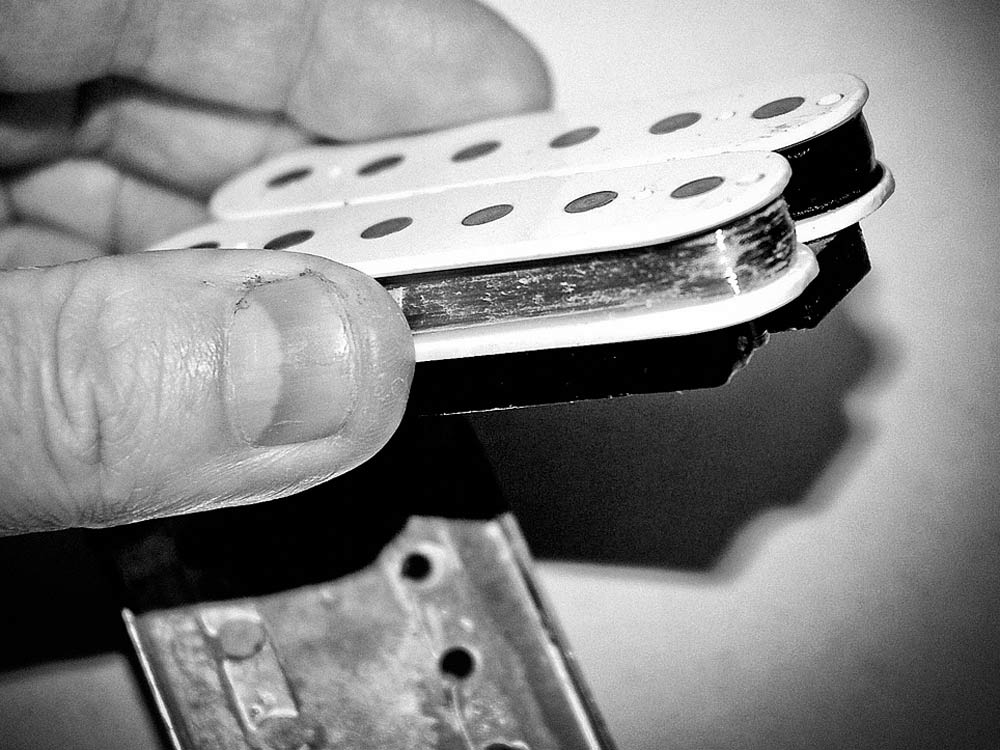
Bobbins
Bobbins are the part of a pickup that holds the turns of wire in place. Vintage PAF humbuckers used butyrate, which can warp when potted, whereas polycarbonate is more commonin modern humbuckers.
Traditional Strat and Tele single-coil pickups have a separate bottom plate and top plate, made from Forbon vulcanised fibre, while one-piece plastic bobbins have been common in mass-produced Strat single coils since the 70s. The physical tallness and width of the bobbin naturally affects the coil shape, which influences the pickup’s sound.
B is also for... Bar magnet
A bar magnet is a flat bar of magnetic material, usually alnico or ceramic, commonly oriented horizontally under the strings and sat beneath the coil. The magnetic field extends through ferrous pole pieces, which contact the magnet and rise through the coil to sit just beneath the strings. Gibson’s single-coil and humbucking pickups use bar magnets, while Fender’s traditional single coils use vertically-mounted rod magnets.
Baseplate
Anyone who’s examined a Tele bridge pickup will have spotted the metal plate on the underside of the unit – and more than a few custom Strat bridge pickups now sporta similar plate. So, what does it do?
“Essentially, it shifts the resonances towards lows and creating and a few more eddy currents, and therefore a bit more in the midrange to roll off that brittleness and that natural Tele brightness a bit,” says Jaime Campbell, founder of Manchester pickup makers The Creamery.
However, as essential as the plate is to classic Tele tone, care needs to be taken to ensure it doesn’t introduce a high, sibilant warble to the pickup’s voice due to loose fitting.
“The metal plate can start to vibrate independently of the rest of the pickup during playing, which means you get this very thin, metallic sound from the bridge pickup. So I prefer to wax-pot the whole pickup with the bracket on, because that dampens that vibration,” adds Cream T’s Thomas Nilson.

Capacitors
Capacitors, an integral part of the tone control of your guitar, come in lots of forms: from the fabled ‘bumblebee’ caps of 50s Gibsons to high-end silver mica versions. A little experimentation in this area can transform your pickup’s amplified voice.
Daniel Steinhardt, audio electronics expert at switching and effects specialists TheGigRig, explains: “Your tone control is simply a capacitor connected to a potentiometer, between the signal of the pickup and ground, effectively creating a low-pass filter. The tone pot is exactly the same as the volume pot, just with an added capacitor in circuit. But when the tone pot is all the way up, the capacitor is effectively removed from the circuit. It’s only when you start dialling in the tone control that the value of the capacitor comes into play.
“The most common single coil value for a capacitor is 0.047uF. For the record, 1uF (microfarad) is equal to 1,000nF (nanofarads). So if you have a 0.047uF capacitor and you find the sound too dark as soon as you start to roll off the tone pot, try a lower value, a 0.033uF or 0.022uF. You’ll find the effect more subtle. If we do the opposite and increase the value of the capacitor, the tone control will have a dramatic [darkening] effect on the sound.”
C is also for... Coils
When you wind copper wire around a magnet it becomes a transducer, or a means to convert one type of energy into another. Disturb the magnet’s ‘flux field’ with vibrating, ferrous strings, and a small but usable current is generated that corresponds to the string’s vibration, thanks to inductance. This is your signal. The physical shape of the coil, the strength of the magnet inside it and the winding, all contribute to the sonic character of the pickup as expressed by that signal.
Covers
Ever since blues-rock heroes started taking the covers off their PAF humbuckers in the 60s, there’s been a bit of rock ’n’ roll mojo surrounding this classic mod. But how does it really affect tone? Tim Mills, the founder of Bare Knuckle Pickups, explains: “It’s said Eric Clapton was one of the first to take them off, because he thought it gave him a little bit more juice. The type of covers that were knocking around then – you’d probably have noticed quite a difference in the high end when you popped one off.
“When it comes to putting covers on pickups, the cover material will probably be of more importance than anything else. Using brass as your base material – which is an easy material to draw into a deep cover – can create a lot of extra capacitance. In other words, it knocks a lot of highs out. Change to nickel and that effect isn’t anywhere near so pronounced, but it’s a much harder material to draw in a tool.”

DC resistance
This term refers to a pickup’s resistance to the flow of direct current when it is at rest (namely, when the guitar is not being played). The more turns of wire that are applied to a pickup, the higher its DC resistance will be, with a high reading of 14k or more typically indicating a hot, loud pickup. But you shouldn’t make too many assumptions based on DC resistance alone.
The Creamery’s Jaime Campbell explains: “A Gibson PAF humbucker will generally have an output reading of around 7.8 to 8.3k and it will be wound with 42 AWG wire. Because it’s a well known pickup, people know roughly how loud – in terms of audible loudness – a Gibson PAF with an Alnico V magnet sounds at that reading, so it tends to get used as a benchmark.
Based on that, you might look at a lower resistance reading from a Strat and conclude that it’s a weaker pickup. But the strength of the magnet plays just as much of a role in perceived loudness: a strong magnet can increase output, too – and the geometry of the coil also has an influence.
“So the DC resistance reading suggests roughly what the pickup can do, but it’s not actually the be-all and end-all.”
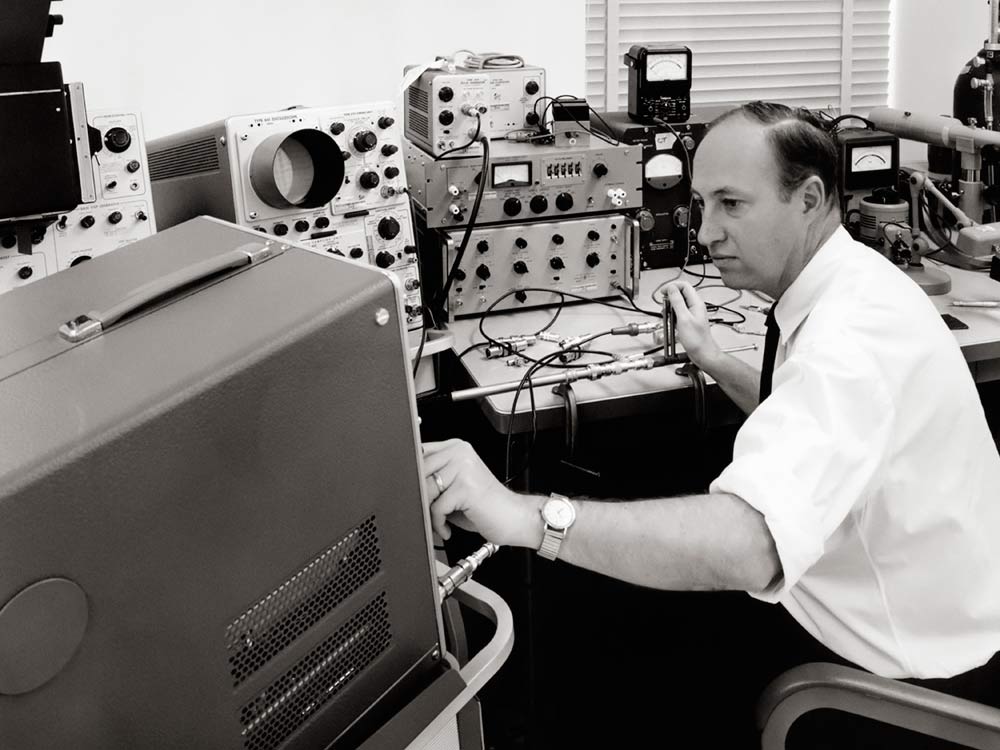
Eddy currents
Eddy currents, one of the more arcane aspects of pickup design, occur when metal components are placed in close proximity to the pickup’s magnet, affecting the voice of the pickup.
Daniel Steinhardt, audio electronics expert at TheGigRig explains: “Eddy currents happen when metal is near the magnetic field of the pickup. Most of the effects are thought to be destructive to your tone, but sometimes the eddy currents created from a metal pickup cover, for example, are very handy for taming a bright, brash-sounding pickup.”
The Creamery’s Jaime Campbell adds: “Essentially, eddy currents create opposing magnetic fields, and the practical effect of that is that if you create a lot of eddy currents in your pickup design, you can bring the sound down more to the midrange, or you can make sure there are none whatsoever to get a much brighter, clearer sound – a kind of high-fidelity, focused sound.”
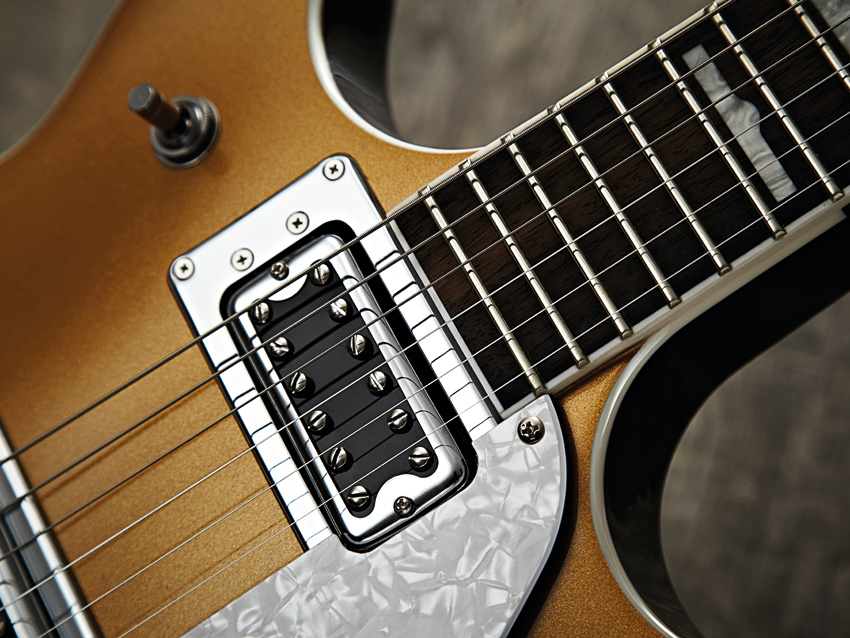
Filter'Tron
Gretsch’s hallmark humbucker was designed by Ray Butts at the behest of Chet Atkins, who disliked the DynaSonic pickups fitted to many Gretsch semis before the introduction of the Filter’Tron in late ’57.
The Creamery’s Jaime Campbell explains how their bright and articulate sound is shaped by the narrow coils employed in the design: “A Filter’Tron is, in some ways, like a standard humbucker: with two coils and a bar magnet underneath. But the coils are under-wound so you’re talking about an output of only 5 to 6k, so the coils are thinner and that means the pickup is more focused: you’re going to get a brighter sound because it’s an underwound coil.
“It’s not going to be as midrange-y as a normal humbucker, but the magnet is big and powerful, so even though the output reading is only about 5 to 6k, it’ll sound roughly the same volume as a standard humbucker – because the power of that magnet increases the perceived output. But it’s a much brighter and more focused sound that has an attacking quality.
“Just by way of illustration, you can think about what the opposite of that would sound like – in other words, if you took a very weak magnet and made a very over-wound pickup with it. By comparison with the Filter’Tron, doing that would give you a very soft, midrange-y sound with a lot less clarity.”
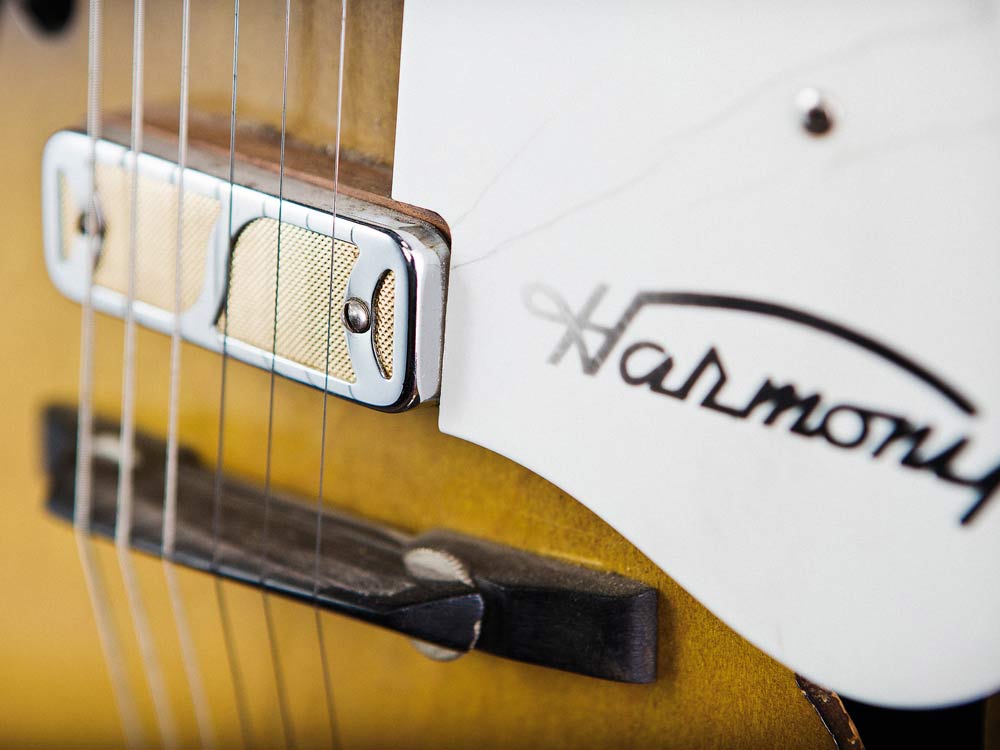
Gold foil pickups
Gold Foil pickups based on original Teisco and DeArmond units are very much the pickup du jour with players looking for something more leftfield in the Ry Cooder or Dan Auerbach-style.
British pickup winder Marc Ransley of Mojo Pickups gives us the skinny: “Fender pickups use Alnico rod magnets as poles and generally have much taller bobbins. Gold Foils, by contrast, have rubberised ferrite/ceramic magnets and narrow bobbins. The narrow bobbins mean the traditional 42 AWG wire used on most guitar pickups is too thick for the Gold Foils.
So Gold Foils use very fine 44 AWG wire, which allows reasonable resistance levels to be achieved within the constraints of the small bobbins. The small, narrow bobbins are necessary as most Gold Foils are surface-mounted and need to be low for string clearance.
“The Teisco style of Gold Foil pickup offers great clarity and dynamics, but with a fuller sound than, let’s say, a Fender single coil. DeArmond-style units still have good clarity but are rawer and grittier than a Teisco, similar perhaps to a P-90 but with more edge.
"Both types have powerful magnets and a steel base plate, this widens the magnetic field, this helps enhance tones you just don’t find with normal single coils.”
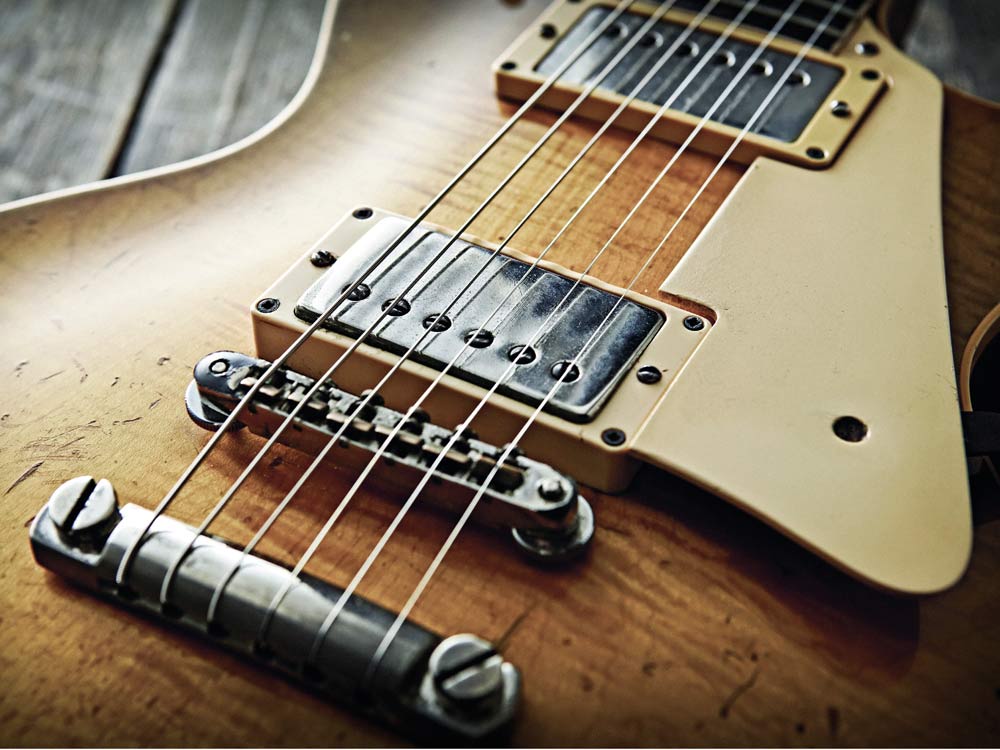
Humbucker
One of the drawbacks of the single-coil pickup is its susceptibility to hum picked up from electromagnetic radiation.
The humbucker, as the name suggests, tackles this problem by wiring two coils together magnetically out of phase. One coil is oriented so it has the south pole of its magnet topmost; the other has the north pole of its magnet topmost.
When the outputs of the two coils are merged, hum frequencies picked up simultaneously by both coils cancel each other out, and thus the hum is bucked.
H is also for... Height
To get the best out of your guitar, it’s important that the pickups are adjusted to the right height. The closer they are to the strings, the louder they will sound, but as always, it’s not just a case of louder is better…
As a rule of thumb, humbuckers can sit as close as you want for the volume you want. To begin, fret the top and bottom E strings at the final fret. Using a steel rule, adjust the humbucker’s height until its treble and bass sides both sit evenly 2.5mm beneath the fretted strings.
A Strat-style single coil, meanwhile, should be adjusted to sit with the treble side slightly higher than the bass for a good tonal balance. Fret the two outer strings at the final fret, then adjust the pickups so the pole piece tops sit 2.5mm and 3.5mm from the treble and bass E strings respectively.
Watch out for wolf notes – these occur when the pickup’s magnetic field is too close to the string’s field of movement, preventing it from vibrating naturally. Step away from the strings, sir!
Strings vibrate more freely near the neck than they do at the bridge, meaning neck pickups sound louder for a given height. A little experimentation with relative height settings may be necessary to establish a good balance in volume between pairs or trios of pickups, and if you have adjustable poles you can fine tune things further once you have a good overall balance.
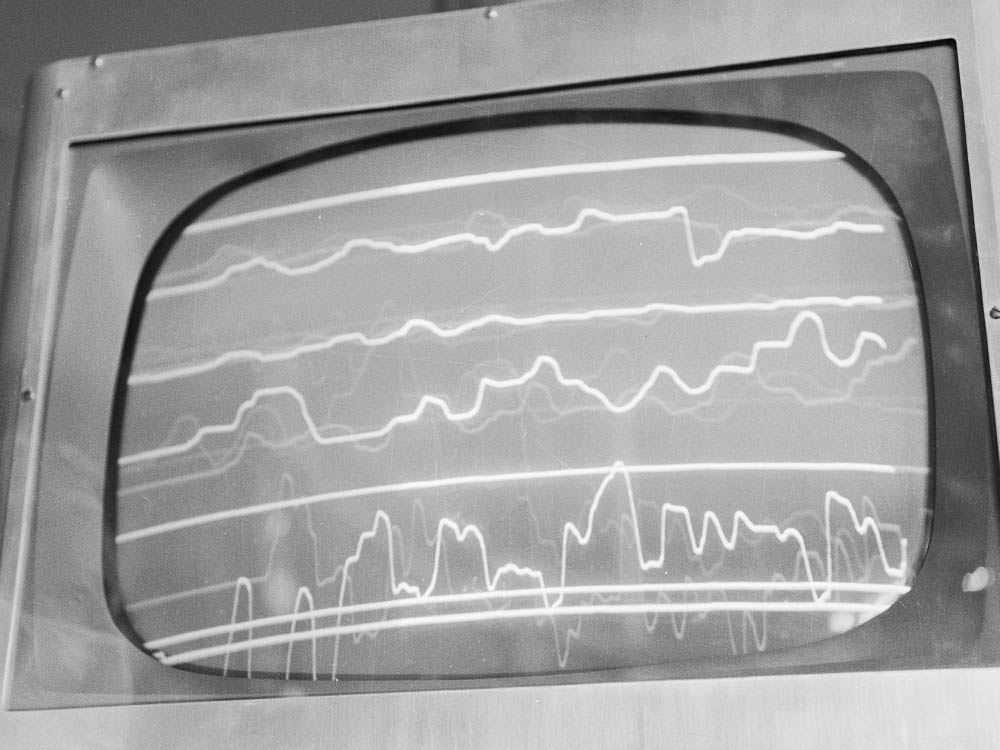
Impedance & inductance
Pickup output is sometimes defined by DC resistance, which is gauged by putting a multimeter over the coil’s output wires and measuring resistance to direct current in ohms. But this isn’t the whole picture, because when a pickup is doing its job, the coil generates AC electricity, not DC.
Inductance is how a coil of wire generates an electric current. When a string vibrates over a guitar pickup, it causes fluctuations in a magnetic field and those fluctuations induce an alternating current to flow in the coil. Inductance is measured in a unit called a ‘henry’: the more turns on a coil, the higher the inductance. Coil cross-section and length also affect inductance, as does the core material.
Impedance, meanwhile, is a measure of how the pickup coil opposes, or impedes the flow of alternating current. Unlike the simplicity of DC resistance, impedance is complicated because the AC is also opposed by capacitance and inductance, which vary with frequency. The influence of these factors are combined under a common name: reactance. So, in simple terms, a pickup coil’s impedance is a product of its resistance, which is nominally fixed, and its reactance, which is variable.
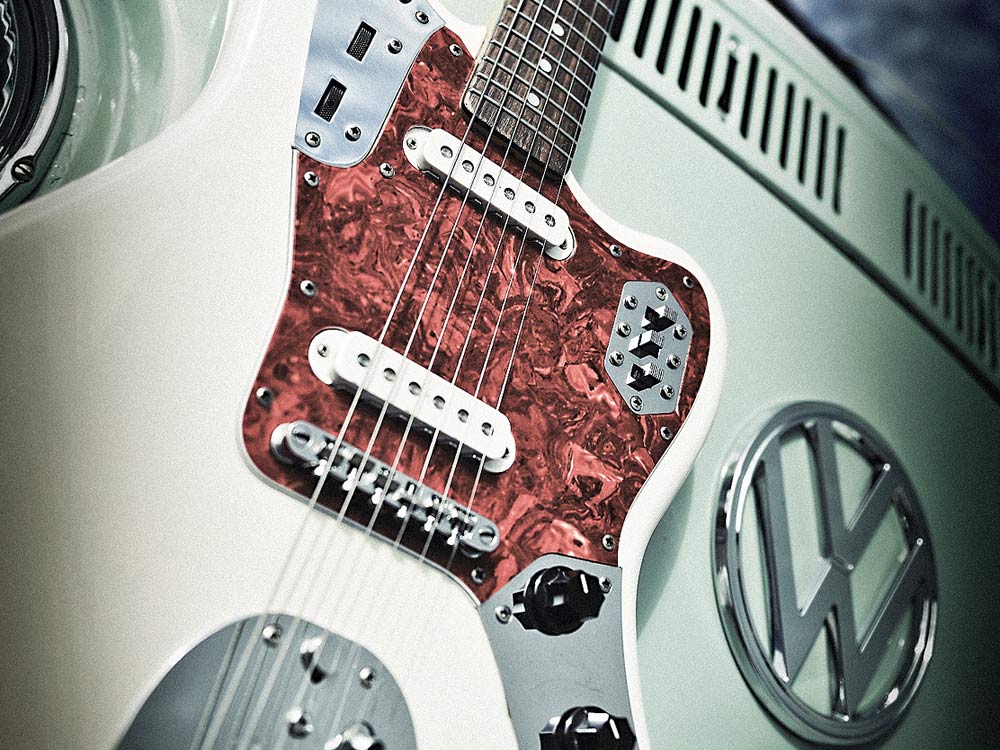
Jazzmaster and Jaguar pickups
Fender’s celebrated offset electrics have carved out their own niche in rock history, often associated with surf-style clean tones and the gnarly drive tones of New Wave pioneers. But the models’ respective pickupdesigns are in fact very different, accounting in part for their difference in tonal character.
“The original Jazzmaster pickup had a really shallow but wide coil,” Jaime Campbell of pickup maker The Creamery explains. “It has a warmer, fatter take on the single coil sound. It has short – and therefore weaker – Alnico V magnets, while the wider coil means it has a wider magnetic field. A vintage Jazzmaster bridge pickup typically has around the same output reading as an old PAF humbucker: around 8k.
“The Jaguar’s pickups are much closer to a Strat’s in design, with the exception of the metal ‘claw’ surrounding the base. It was an attempt to try and stop some of the usual 60Hz hum you get with single coils. The claw acts as a kind of shielding device, because it’s effectively wrapped around the pickup. It has a more attacking, brighter sound than a Jazzmaster pickup because it has a taller, narrower coil.”

Kilo-ohms
The DC resistance of a pickup is typically expressed in kilo-ohms (units of 1,000 ohms), hence you’ll hear people talk about an 8k pickup or a 12k pickup, for example.
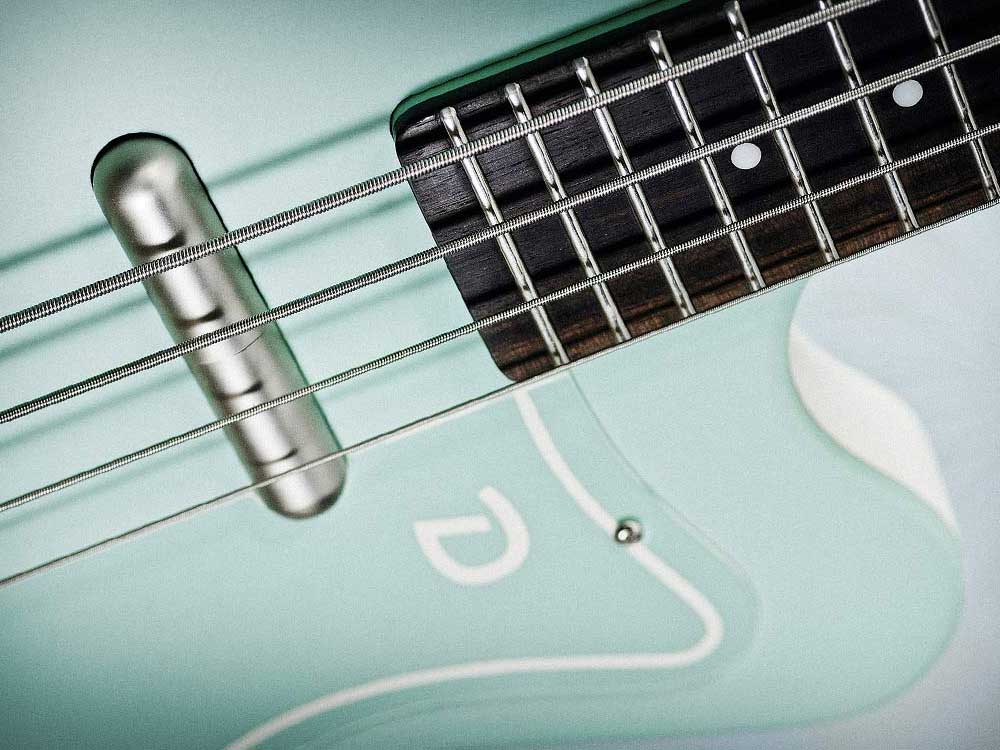
Lipstick tube pickups
The original pickups used on Danelectro and Silvertone guitars were called lipstick tubes, because the cases were actually purchased from a lipstick tube manufacturer.
There’s no bobbin or coil former inside, instead the coil is wound directly around an alnico bar magnet. Lipstick pickups are known for having a jangly treble response, mostly due to the original pickup’s resistance of around 4.5kohms – about two thirds that of a standard Stratocaster pickup.
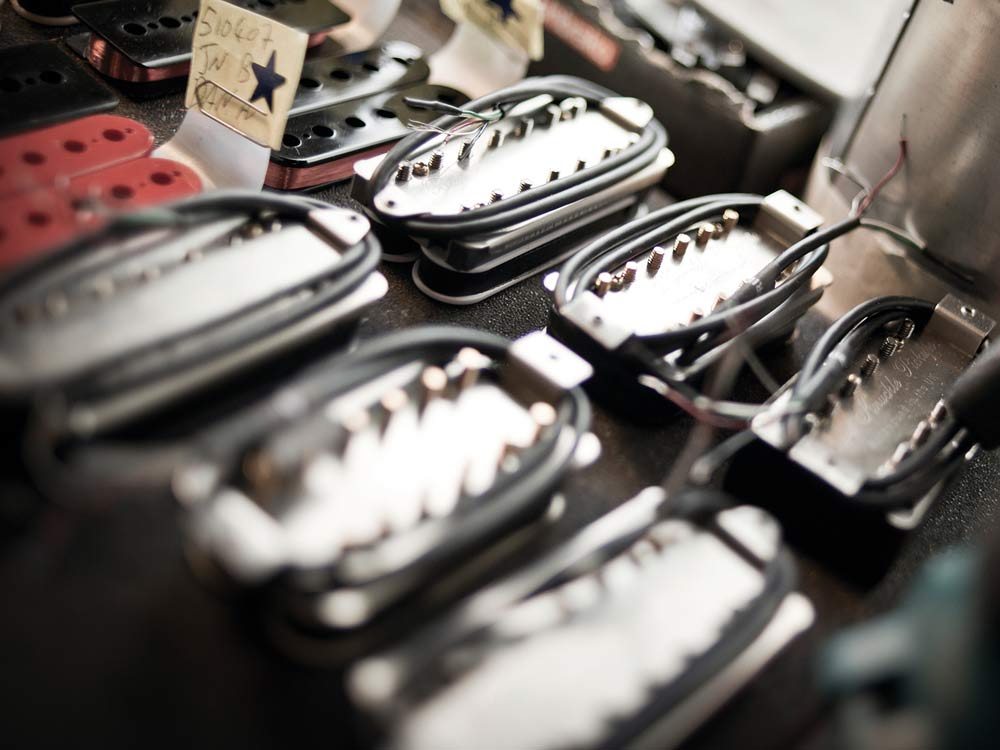
Magnets
While magnets don’t have an inherent ‘tone’, the influence of various magnet types on the performance of a given pickup can be categorised in broad tonal terms. These range from the various grades of Alnico (a magnet made principally of aluminium, nickel and cobalt) to more powerful ceramic types. Tim Mills of Bare Knuckle Pickups explains:
“Take a humbucker wound with 42-gauge wire as a benchmark. With an Alnico II magnet, it would have a warm, soft bass response, a very sweet high end and a slightly pronounced midrange. Alnico III, funnily enough, is not quite as strong as Alnico II.
"So, the highs tend to be more muted and rounded. Probably the best way to imagine the sound of Alnico III is to think of the early 1950s, when this form of magnet was very common. Think of the sounds of the jazz and clean guitar tones from that time – that plummy roundness.
"Move up to Alnico IV and the power rating comes up and the frequency response flattens out – you get a balanced and natural-sounding response from the coils, but not so it’s boosting the treble. The midrange stays quite constant as well. And then you go to Alnico V, which has the highest power. Then the bass and treble do get boosted and the sound starts to get more aggressive – more ‘rock ’n’ roll’, for want of a better term.
“Ceramic is a much more powerful magnet again [than Alnico V]. The bass and treble get boosted significantly. A lot of people think ceramic magnets scoop the mids out, but when you analyse it you find the mids tend to stay where they are – it’s just that the bass and treble get boosted so much you get a V-shaped taper in the EQ. Ceramic pickups tend to suit players who need a very fast and percussive pick attack.”

Noiseless pickups
Single-coil pickups tend to pick up hum, and although single coil-sized stacked humbuckers exist, they have drawbacks of their own, as Seymour Duncan’s head engineer Kevin Beller explains.
“In a traditional stack structure, you’ve got two evenly sized coils and one of them is picking upthe strings mainly and both of them are picking up hum. But the problem in a traditional stack is that the [lower, hum-cancelling coil] also picks up string signal and it’s cancelling some of the string signal in the top coil. The only reason that it works is that the bottom coil is farther from the string where the string signal is weaker.
“But we’ve now developed a design called the Stack Plus in which the upper coil has the same tall profile as a normal Strat coil – and then we have a very small bottom coil that does the actual hum-cancelling. Usually, you wouldn’t be able to get away with that unbalanced design but we’ve developed a circuit that intercepts a lot of the hum field that’s on its way to hitting the top coil and channels it into the bottom coil.”

Origins
In the early 1920s, jazz big bands were becoming increasingly popular, and bandleaders were adding more brass so they could play to bigger audiences.
During hard times, it was usually the guitarist who was first to get the sack, as their contribution was often inaudible. Where pickups are concerned, necessity was the mother of invention. Throughout the 1920s, players and inventors tinkered with combinations of microphones, magnets and coils, searching for the magic combination.
One of the earliest pioneers to succeed was virtuoso player, inventor and bandleader Alvino Rey. In 1935, Gibson’s Guy Hart approached Rey for help developing a guitar version of a home-made pickup he had been using on his banjo. That pickup went into Gibson’s first electric guitar, the ES-150, used by jazz legend Charlie Christian. It’s ironic that the ES-150’s pickup is now referred to as the ‘Charlie Christian’ – Rey’s contribution has been mostly forgotten.
Hawaiian music was also popular; the ‘Frying Pan’ lap-steel designed by Rickenbacker’s George Beauchamp is often credited as the first solid electric guitar. However, both were preceded by Stromberg’s 1928 Electro guitar, which also had an electromagnetic pickup.
The humbucker’s origins date back to early telephone research by Bell Labs, and possibly a patent for a humbucking piano pickup, awarded to Baldwin around 1938. Seth Lover’s PAF and Ray Butts’ Filter’Tron owe some of their success to that one.
Leo Fender’s 1940s lap-steel pickup designs were later refined into the elegant single-coil units fitted to the Telecaster – the first successful solid-bodied guitar. The first successful guitar pickups were invented almost simultaneously by several people – we remember the ‘winners’, but many significant contributions came from less well-known names.
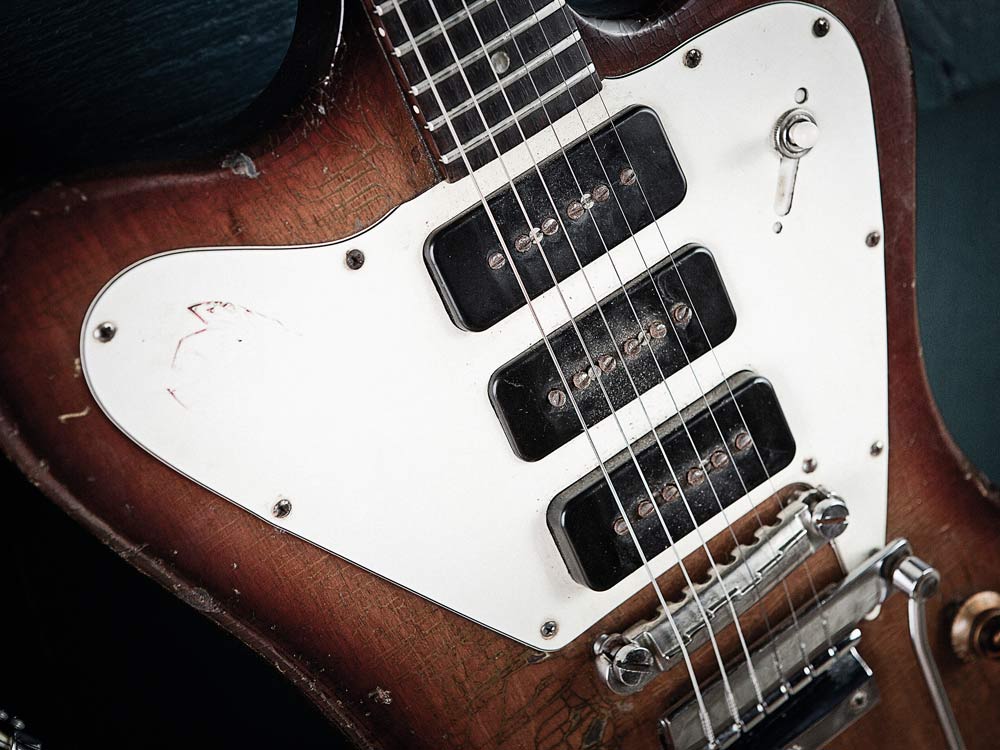
P-90
The P-90 is a famous Gibson single-coil pickup, introduced in 1946. Until the humbucker arrived in 1957, the P-90 was used on most Gibson electrics; afterwards, it continued to be used on lesser instruments.
A P-90 comes in one of two packages: the dog-ear or soapbar, both named after their appearance. Dog-ear P-90s were typically used on Gibson’s ‘student’ guitars – the Les Paul and SG Junior, and hollowbody guitars such as the ES-330, or Epiphone’s famous equivalent, the Casino. Soapbars were used on Les Pauls, sometimes teamed with the Alnico V pickup – a hotter version of the P-90, used on other premium instruments, such as the ES-5 and Byrdland.
P-90s have a flat, wide coil, combined with two bar magnets. They’re warmer than Fender single coils and more powerful, however they’re prone to feedback and hum. Several humbucking replacements that retain the look and, to a certain degree, the sound of the original are also available.
P is also for... Polepieces
Polepieces – which may be rod-shaped magnets as in the case of Strat pickups, or simply ferrous conductors of a bar magnet’s field, as in the screw poles of P-90 pickups – serve to focus the pickup’s magnetic field on the strings, although more modern blade-type pickups have their own advantages, as Tim Mills of Bare Knuckle Pickups explains:
“The difference between individual polepieces and blades is to do with the focus of the magnetism under the string. Obviously, a magnetic rod focuses very directly onto the string. A blade will take that magnetism more evenly across the strings, so you will get, ironically, a better string-to-string balance and it actually produces more drive, I find, whereas an individual rod magnet is very powerful underneath that one specific string.”
Potting
Wax potting is a pickup manufacturing technique that involves dipping the pickup coils in liquid wax (often a beeswax- or parrafin-based compound) to ensure that the finished pickup is resistant to unwanted microphonic feedback.
“The wire that you wind a pickup with is round in cross-section, and so when you wind a pickup, air pockets are created in the spaces between turns of wire sitting on top of one another,” Thomas Nilsen of Cream T explains.
These tiny air gaps mean the coils of fine wire wrapped around the bobbin of the pickup can vibrate when exposed to the sound of a cranked, distorted amp, causing microphonic feedback. Dipping the coils in wax reduces those tiny air gaps, and thus reduces the pickup’s susceptibility to such feedback, making potted pickups a must for players who like loud, dirty tones, as Tim Mills, of Bare Knuckle Pickups, outlines:
“As a general rule, most players that use a lot of gain, and a lot of volume, will be better off with a potted coil. Anything gained by dynamic sensitivity in an unpotted coil is generally lost at that kind of volume level anyway. It’s normally in high-end detail and touch response – but if you are using a lot of volume, touch response is over in a split second. You’d be better off with a more controllable pickup to start with at those kind of levels. For the pure tone hounds, an unpotted pickup does give you this touch-sensitivity; it gives a more vocal tone and arguably a little bit more high end as well.”
“Sometimes when you wax-pot a pickup, it can make it sound very thick and compressed-sounding. It’s as if you put a blanket in front of the amplifier,” Thomas Nilsen of Cream T adds, “but I researched different mixtures of wax, such as mixing beeswax with other ingredients, so I could have the pickups actually sound as if they aren’t potted – and yet work with high-gain amps as well.”
The actual manner in which pickups are potted, and the blend of wax used in the process, varies from maker to maker. Seymour Duncan, for example, pioneered vacuum wax potting, which is used by many mainstream pickup makers to ensure all the coil is penetrated with wax; others encapsulate the coils in epoxy.
Some pickups are double-potted. For example, covered humbuckers are wax potted before and after the cover is installed in order to prevent microphony at high levels that can be caused by any air gaps between the actual pickup and the cover.
Pots
The other electronic components of your guitar have a role in shaping the signal generated by the pickups, including the potentiometers, or control pots, which are used to adjust levels of volume and tone on your electric guitar. Among other things, the type of pot used determines the total amount of top end signal that’s available.
“There are two common pot values,” explains Daniel Steinhardt of TheGigRig. “You’ve got your 500kohm pot, which is mostly used with humbuckers, and then you’ve got your 250kohm pot, which is mostly used with single-coil pickups. The pot values show its resistance, and in a passive guitar circuit these different values allow a little bit of top end to bleed to ground. The higher the value of the pot you’re using, the less top end will bleed to ground.
“Single coils are generally much brighter than humbuckers, so 250k tends to allow just enough top end through to sound right. Humbuckers generally have a warmer sound, so 500k pots keep most of the top end intact. If you have a particularly dark-sounding pickup, you can try increasing the resistance of the volume pot to see if it retains more of the pickup’s natural top end. A little bit of resistance can be good, as it helps suppress some of the noise that flies around in the high frequencies.”
“When you turn down the volume pot you increase the amount signal that goes to ground, so your output is reduced, but you can also get a reduction in top end. A really common mod to the volume pot is what we call a ‘treble bleed’ mod. It basically works the same way as the bright switch on your amp where a resistor and a small value capacitor is placed in parallel to the volume pot so when you turn down the volume it still allows the top end frequencies to pass through keeping your top end present even though the volume is being turned down. A simple but very effective mod”
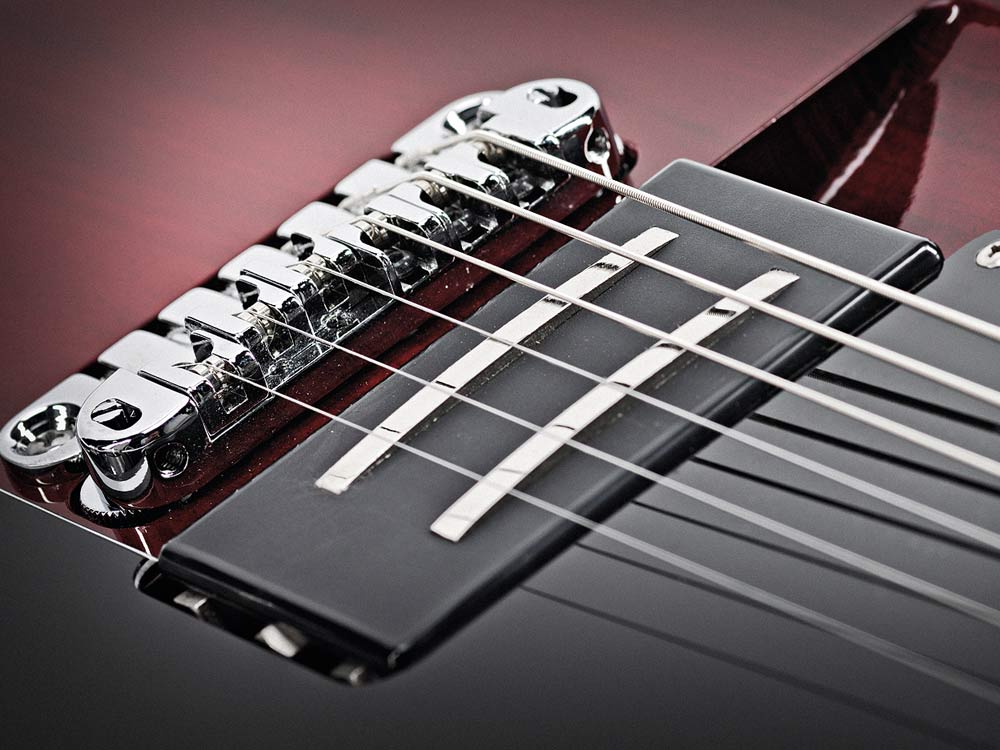
Quick change pickups
Quick-change pickups use solderless connectors that enable you to rapidly and easily swap the pickups on your guitar.
Several major manufacturers offer quick-change options, including Seymour Duncan (Liberator pots), Gibson (QuickConnect), Fender (Solderless), while others, such as Di Marzio, offer complete pre-wired harnesses, including pots and controls, with solderless connectors.
They’re pretty widely available, although the choice is sometimes more limited.
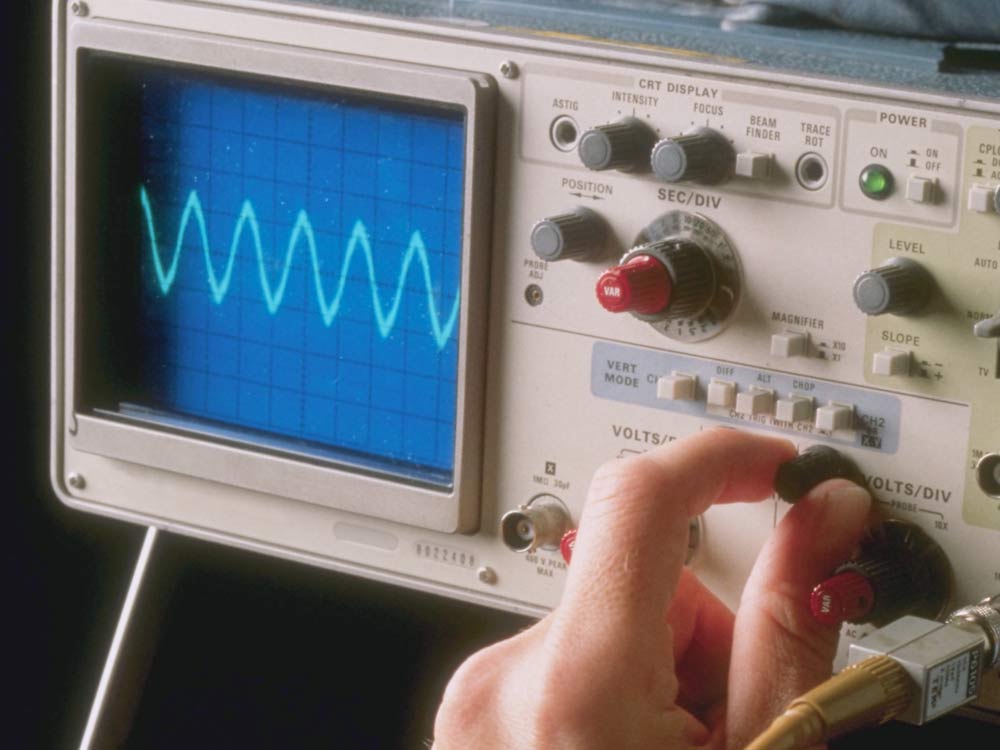
Resonant peak
When evaluating pickup spec, DC resistance should not be confused with impedance, which is the resistance to the flow of alternating current, and which varies according to frequency.
The frequency at which a pickup’s impedance reaches its highest level is called the resonant peak. A resonant peak of around 3kHz to 4kHz will tend to sound more midrange-heavy with a lot of ‘punch’. The higher in frequency the resonant peak, the clearer and brighter the pickup’s tone will be.
Many pickup manufacturers publish the DC resistance and resonant peak of their pickups. You might expect a vintage Strat-style single coil, such as Seymour Duncan’s SSL-1 Vintage Staggered, to have a higher resonant peak (quoted as 10kHz) than, say, a humbucker, such as Seymour Duncan’s well-used JB, which has a resonant peak of 5.5kHz.
The former has a much brighter tone, the latter a more midrange-intensive tone. Combined with DC resistance, the resonant peak figure can give a good indication of what you will hear.
R is also for... Radius & Stagger
Pickups with vintage-correct staggered polepieces, in which the central poles rise higher than the others, hark back to a golden era of tone – but beware if your guitar’s fingerboard has a flatter modern radius than the guitars those pickups were designed for. What was intended to provide a balanced sound may end up unbalancing it, because the heights of the poles won’t conform to the edge-to-edge rise and fall in string height associated with a curvier vintage ’board.
“If you’ve got a flatter neck profile, such as a 12-inch radius, a vintage stagger Strat pickup will emphasise some strings at the expense of others,” says Jaime Campbell of pickup makers The Creamery. “Adjusting can’t fix that because you’ve got two different things in play: a flat-radius ’board but staggered radius pickup polepieces.”
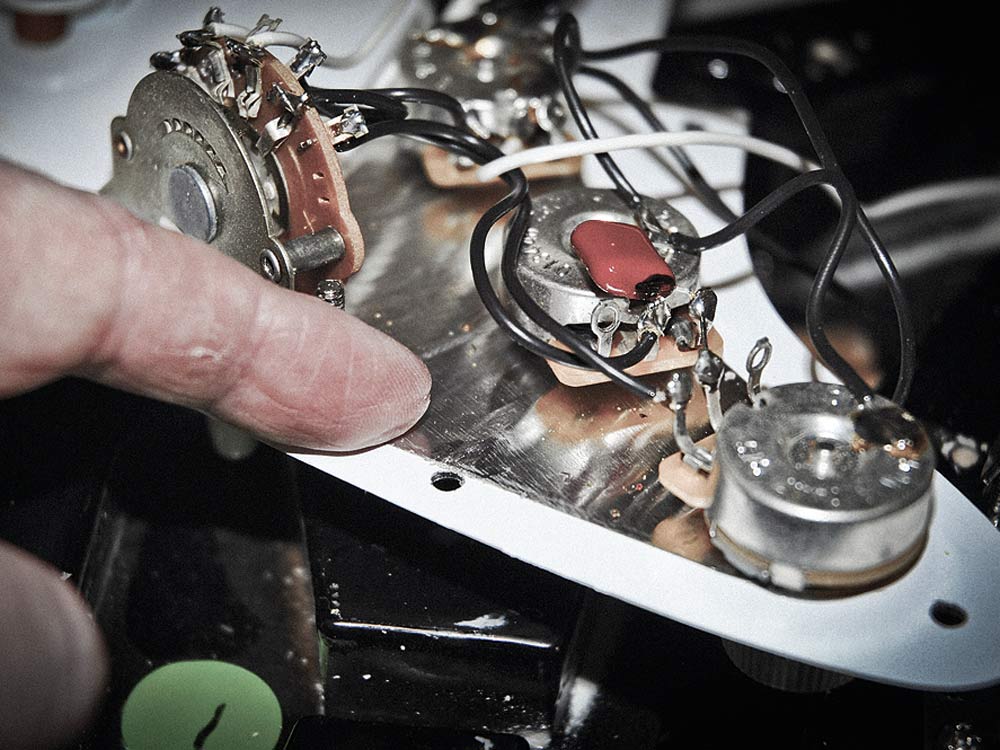
Shielding
A guitar pickup – especially a single-coil pickup – is also a pretty good directional aerial, and easily collects noise from electrical devices that generate it.
Typical sources of EMR (electromagnetic radiation) include fluorescent tube lights, dimmer switches and the mains transformer in your guitar amp. Move a guitar pickup close to one of these culprits and you’ll usually hear a nasty hum.
Shielding can help reduce this, making a guitar more usable in environments with a lot of electrical noise. The shield intercepts the electromagnetic signal causing the noise and carries it to ground, away from the wire conducting the audio signal. An electric guitar’s shielding can be improved upon by lining control cavities with copper or aluminium foil, or painting them with a special electrically conductive paint.
However, Tim Mills of Bare Knuckle Pickups urges caution if you’re considering this kind of shielding work.
“If you’ve got good integrity through your metal choice, your wire choice, your magnet choice, and your paths to ground are all good, then noise really shouldn’t be an issue with a humbucker. So I don’t advocate massive amounts of screening, because you can end up causing problems with eddy currents that suck tone out. When we see old 70s coils come in for rewind, you find single coils all wrapped up in copper foil or tin foil, aluminium foil, and the customer’s saying, ‘It’s got no high end.’ It’s like, ‘I wonder why that is!’”
Something often overlooked in hum reduction work is the role of tone capacitors. Some trendy paper-in-oil aftermarket capacitors are very inductive – they collect noise just as a guitar pickup does. It’s a straightforward task to swap these out for more boring but non-inductive types. The ‘pink brick’ foil/film capacitors made by WIMA are among the best you can buy, although they’re made for PCB use and need a little adapting for guitar tone pots.
S is also for... Single coil
Single-coil pickups, by definition, have one coil of wire, unlike humbuckers, which have two or more. Early pickups, such as those on Gibson’s ES-150, or Fender’s Telecaster, were all single coils. A single-coil pickup usually has lower impedance, while the narrower coil samples a smaller portion of the string, typically resulting in a brighter and purer tone than a humbucker.
String Pull
The magnetic field generated by a pickup influences how freely the strings can move, which in turn influences their amplified sound. Jaime Campbell of The Creamery explains: “The strength of the magnet will either allow the strings to vibrate more freely, if the magnet is weak, or less freely if the magnet is strong. And that affects the warmth, sweetness and attack of the amplified sound. For example, when someone asks for a warm, vintage humbucker sound, I’ll often suggest an Alnico II magnet in the bridge, because it’s slightly weaker and it ‘holds’ the string a little bit less, so it can vibrate more freely and deliver a sweeter, warmer bridge-position sound. But I’ll suggest a stronger magnet – an Alnico V – at the neck because it’ll hold the string more and give a bit more clarity.”
Switching
There are many ways to mod the switching of guitar pickups to give extra tonal options. In the early days of custom pickups, single-coil pickups were ‘tapped’ – adding a second conductor to a ‘hot’ overwound coil partway through its length, with a switch to select the high-output full coil, or the normal-output tapped section [fig 1]. Tapping is often used to talk about switching off one coil in a humbucking pickup, although this is more accurately called coil splitting. Taps or coils can be switched using small toggle switches or rotary potentiometers, for a variable effect. Two pickups are commonly wired in parallel and in phase with each other, but as in Danelectros, they can be wired in series and/or out of phase [fig 3]. Both pickups need to be on to get the thin, wiry out-of-phase sound.
Positions two and four on a Stratocaster are often called ‘out of phase’, but the coils are actually in phase. That distinctive ‘quack’ tone is down to the spacing between the coils and the string harmonics they ‘hear’. Connecting a separate conductor to all four coil ends in a humbucker gives the maximum choice of wiring options, allowing the two coils to be wired in series (normal) or parallel, for a slightly brighter sound that remains humbucking [fig 4], or split, turning off one coil [fig 2]. Split-coil switching is most effective on bridge pickups, where the string harmonic nodes are closer. Put two DPDT (double-pole, double-throw) switches on a single four-conductor humbucker and you can pull even cooler switching tricks. Here’s a diagram that lets you combine coil splitting and phase switching [fig 5]. The cool bit is that using the pickup on its own in split-coil mode, the phase switch determines which coil stays on. Used on a bridge pickup, there’s usually an audible difference between the two split-coil modes.
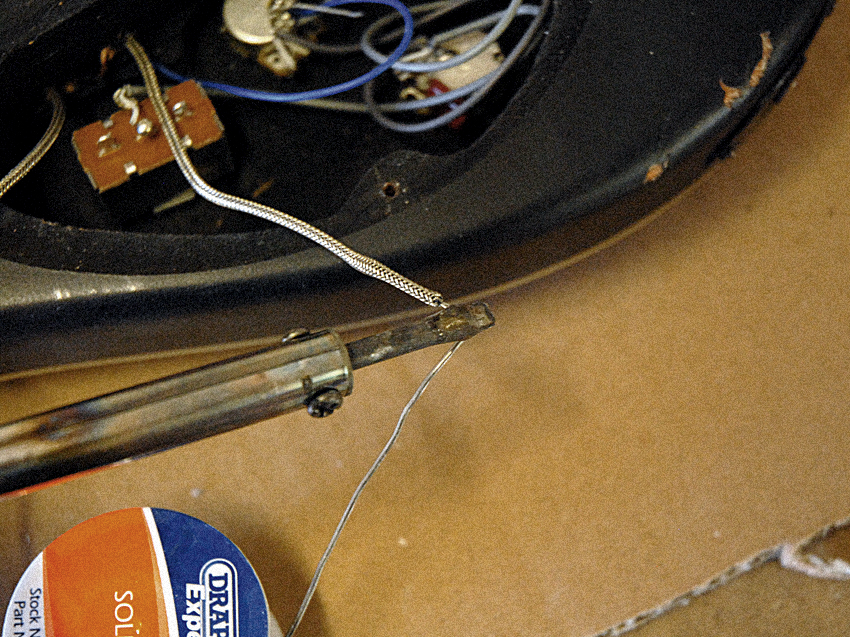
Treble-bleed
A treble-bleed circuit is a filter consisting of a resistor and capacitor, wired in parallel across the hot tags of a guitar’s volume control.
As the control is turned down, the loading effect of the pot’s resistance reduces high frequencies. The treble bleed circuit progressively removes low frequencies to balance this out. Typical resistor and capacitor values are 150kohms and 1,000pf.
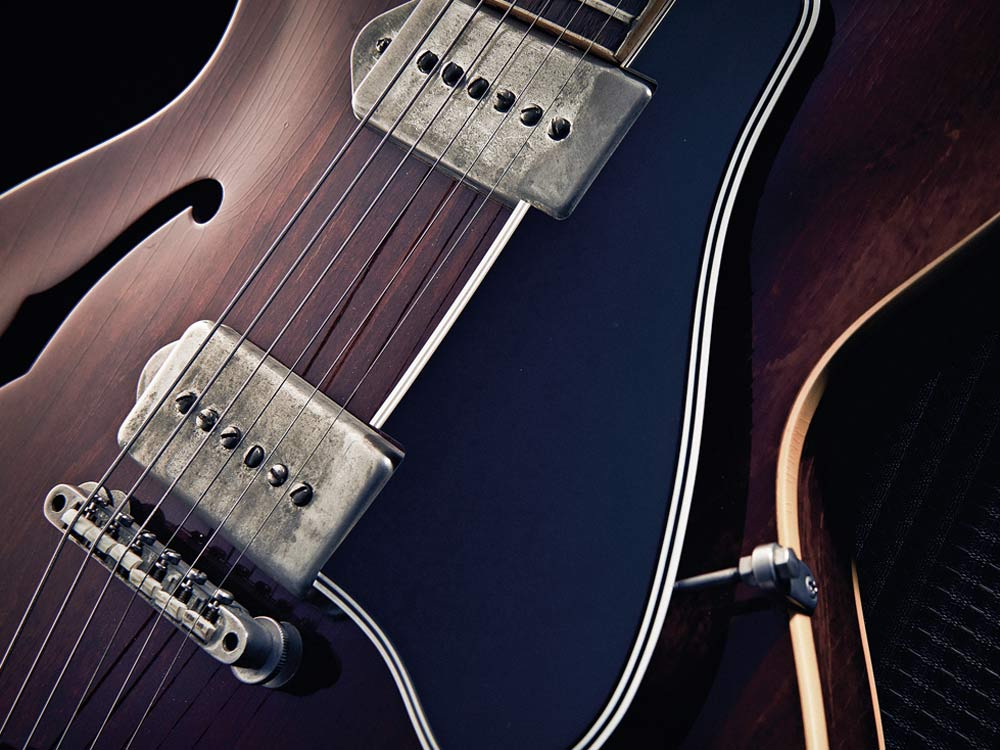
Unpotted pickups
If the ultimate touch-sensitivity of an unpotted pickup is your goal, it’s advisable to be aware that there are lots of things pickup makers can do in order to maximise their resistance to microphonic feedback, as Tim Mills of Bare Knuckle explains:
“There are various things we will do that will reduce microphony without losing that sensitivity in the coil, which is what you actually want. If the magnet has got a lot of movement in it, that’ll cause issues. We’ll be checking the baseplate screws are tight, and how much air is trapped underneath the cover.
“If you rap your knuckle on it and it’s knocking around like an old Datsun Cherry car, then you know damn well that it is going to be as vocal as anything once you are above talking volume – and when you’ve got a little bit of grit on the amp it’ll go beyond touch sensitivity into uncontrollable. But a little bit of tape under the cover can help with that, a dip of lacquer on the magnet can just help set it and make it more stable under the coils, without immersing the pickup in wax.”
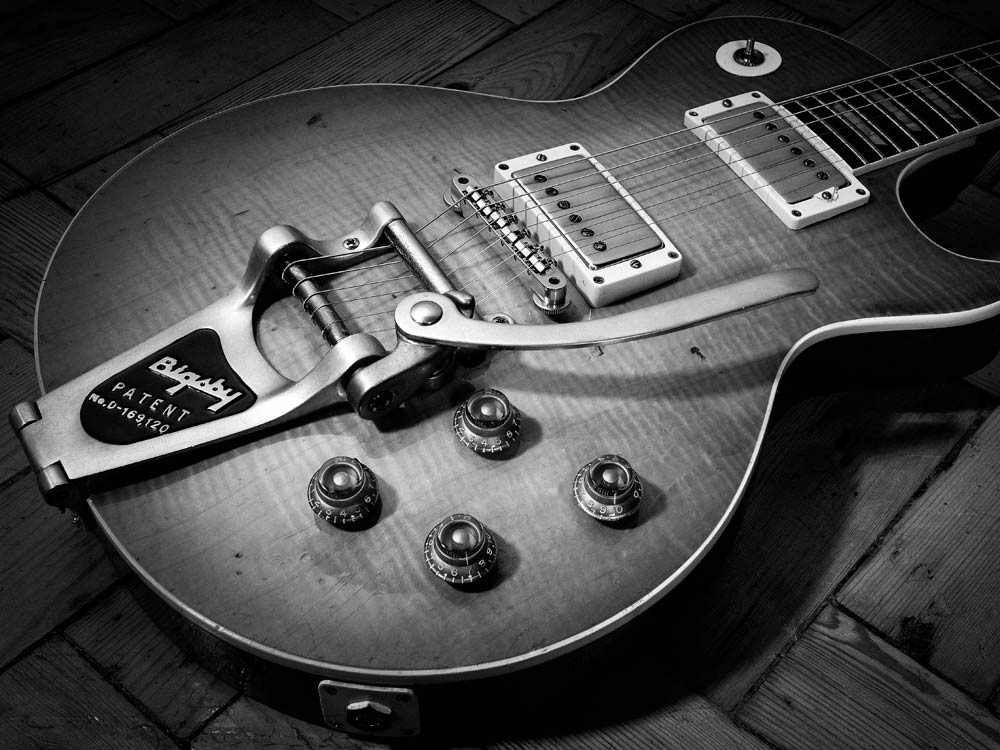
Vintage pickups
While age in itself has a minimal effect on pickup performance, an undeniable mystique surrounds old pups. The most revered vintage pickup of all is Gibson’s PAF humbucker, designed at Gibson by engineer Seth Lover. The patent was filed in June 1955. For many, PAFs represent the Holy Grail of pickup tone, but they were made by hand often quite haphazardly – so not all examples live up to the legend. Tim Mills explains:
“Probably the biggest myth is that they all sound great – they don’t. I’d probably say most of them sound average to poor. But when you get a good one, it’s like: ‘Oh my God! That’s incredible.’ That normally comes down to a clarity through all of the frequencies, and this sensitivity, this response, this dynamic that they have. I’ve repaired loads over the years and some were just absolutely breathtaking when you put them into the test guitar, while others just sound flat.
"You’ll look at some, and you’ll look at the coil size, and it’ll literally almost be bursting out of the sides and you’ll think, ‘this is going to sound pretty rough,’ and it doesn’t! It’s one of the good ones. I’ve learnt a lot about the tension in the coil based on that. You certainly don’t want the coil windings to be over-tight. It needs to have that space, that air in the coil to give that beautiful bloom.”
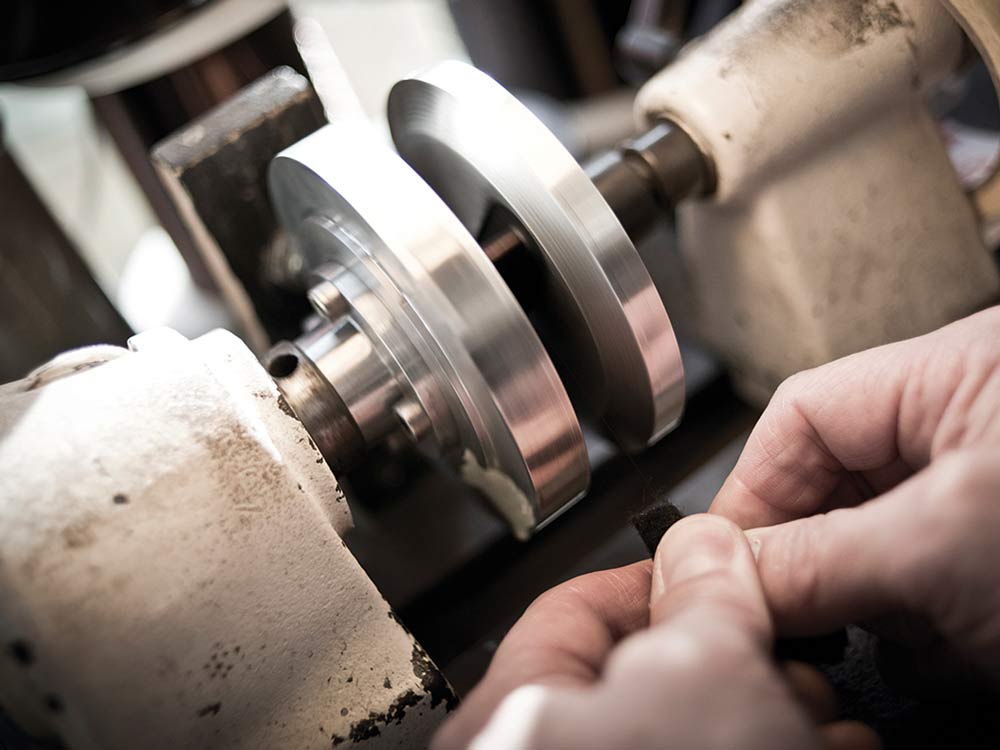
Winding
While the bobbin helps define the shape of the coil, the way in which turns of wire are wound onto the bobbin also has its influence on tone.
Pickups can be either machine-wound, in which the bobbin is mechanically rotated while another machine feeds turns of wire onto it; hand-wound, in which the bobbin is mechanically rotated but the wire is fed onto it by hand; or scatter-wound, in which the bobbin is rotated mechanically while wire is fed onto it by hand in an intentionally irregular pattern.
The economic and practical benefits of having machines doing the winding are obvious, but why would you want to employ the intentionally irregular effect of hand- or scatter-winding? Tim Mills of Bare Knuckle Pickups explains:
“By scattering the wire as you put it on the bobbin, you’re essentially adding to the insulator effect of the wire insulation itself by putting in tens of thousands of microscopic little air gaps – just by making the wire go in at a more random pattern.
"What you’ve got to be careful of is that you don’t actually lose the shape of the coil and end up with a huge knot in the middle of it. I’ll do this scattering two thirds or three quarters of the way through the coil, and then the final third I’ll try to get the wire to lay on a lot more uniformly.
"Sonically, by scattering the wire like that it’s going to reduce capacitance build-up within the coil, and so it should sound cleaner, more dynamic and have the perceived effect of sounding louder.”
W is also for... Wide Range
Seth Lover, who designed Gibson’s feted PAF, also designed the Wide Range pickup for Fender. Jaime Campbell of The Creamery feels that it’s an unsung classic. “It has 12 individual CuNiFe (copper, nickel, iron) magnets – though six are hidden beneath the cover – which were used because you can machine them with a thread and a flat-head groove on the top, so they can be adjusted for height and thus find the sweet spot for each string. I love them: they really cut through the mix.”
Note that some later reissues of this pickup retained the Wide Range’s offset look but not its unique internal design, which is key to the original’s sonic character.
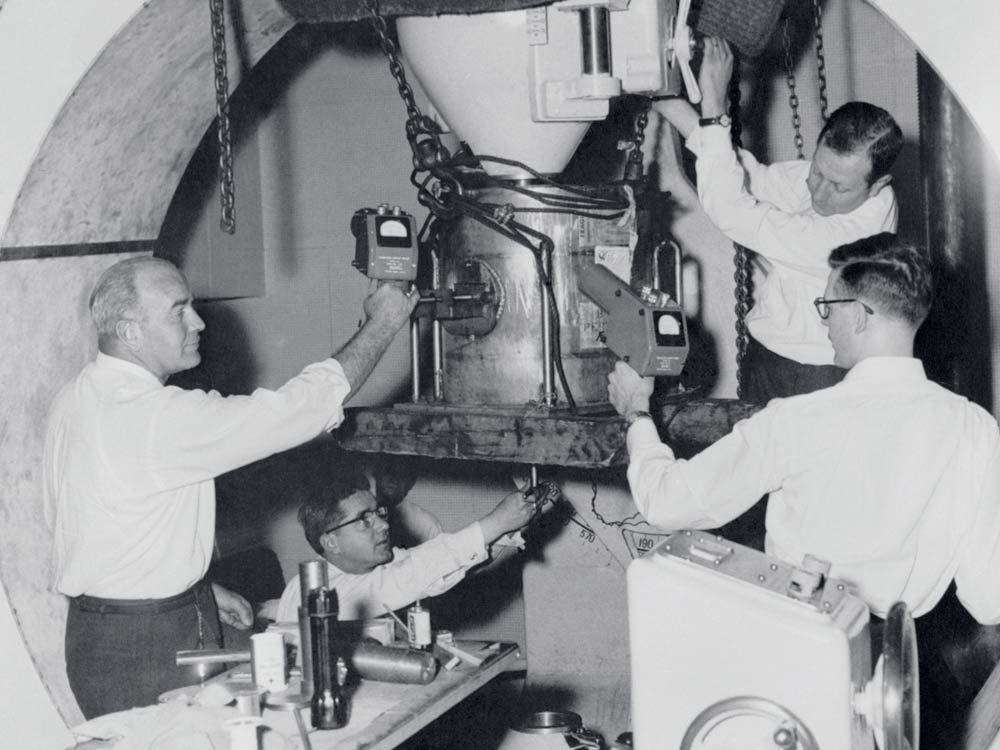
X-ray
Okay, we’re cheating a bit here.
Some airport security scans use not X-ray machines but magnetic resonance imaging devices in security scans of carry-on luggage. These can, purportedly, damage pickups.
Thomas Nilsen of Cream T pickups reports that Billy Gibbons of ZZ Top once had a set of pickups totally drained of magnetic charge by such a scan at a Russian airport. So, if in doubt, check it in the hold!

Ybarra, Abigail: queen of pickups
Abigail Ybarra, whose pickup-winding skills have become synonymous with some of the best Fender pickups, was hired by the company in 1956 and retired in 2013 after over five decades working there.
Abigail began winding and building pickups in 1958 and her hand-wound and signed single coils are highly prized, and known as ‘Abbys’.
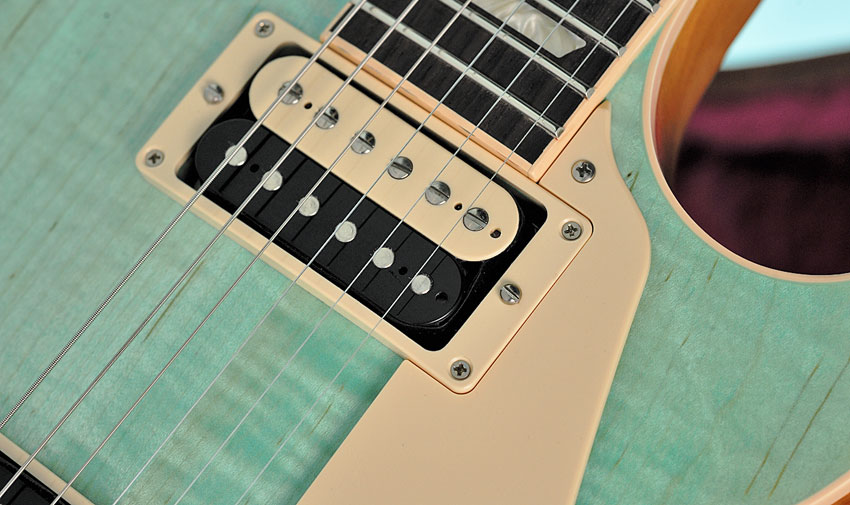
Zebra pickups
The story goes that zebra coils – a humbucker with one white and one black bobbin – first appeared on PAFs because Gibson’s supplier ran out of black pigment.
Gibson wasn’t too bothered because nobody could see the bobbins beneath the pickup covers, so raw cream coils were used as well as black ones.
Some PAFs had ‘zebra coils’ – a combination of black and cream – while some were double cream, discovered only when players took the covers off.

Guitarist is the longest established UK guitar magazine, offering gear reviews, artist interviews, techniques lessons and loads more, in print, on tablet and on smartphones
Digital: http://bit.ly/GuitaristiOS
If you love guitars, you'll love Guitarist. Find us in print, on Newsstand for iPad, iPhone and other digital readers

